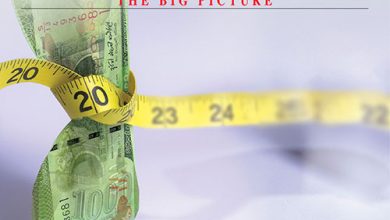BACK FROM THE DEAD
REAL ILLUSIONS!
Ruwandi Perera explores the technology that brings people back from the dead!

France’s presidential candidate Jean-Luc Mélenchon spoke to some 35,000 people at seven different pre-election rallies across the country in April… all at the same time. Could it have been magic? Think again… because holograms are set to change the world as we know it with their ability to enable someone to be in two or more places at the same time.
A hologram is a 3D image displayed on a 2D surface using light projection. The secret behind the magic is that the projection allows you to detect a range of visual cues like reflection, light, shadow, movement and contrast that fool the brain into thinking you’re looking at a 3D image.
And it’s much more convenient than watching actual 3D graphics as you can view holograms without wearing special glasses. Holograms are so life-like that they look different when viewed from different angles – so it’s like looking at a real person or an object.
Holography is a photographic trick and was first developed in the 1940s by Nobel Prize-winning Hungarian-British physicist Dennis Gabor.
You need not go too far to see a hologram – you may even have access to one in your wallet right now.
Credit cards and even identification cards in some countries include holograms to combat forgery. But these are neither glamorous nor magical as they look more or less like shiny pictures that change colour when you view them from different angles.
The use of fully fledged holograms is becoming increasingly popular especially in the entertainment industry. With Tupac’s ‘ghost’ appearing at Coachella in 2012 and Michael Jackson stealing the show at the 2014 Billboard Music Awards, artistes have gone berserk over the endless opportunities holography presents.
Wouldn’t you love to be at Coldplay’s next concert? Well now you can, minus the airfare, as long as you’re not adamant about having your T-shirt signed by Chris Martin!
South Korea’s capital Seoul boasts four theatres that are dedicated to presenting virtual live concerts. Although virtual, fans flock endlessly to K-pop hologram concerts to get up close with their beloved performers. And once you stop obsessing over the idea that the person onstage isn’t really a person, these concerts are very much like the real thing.
Holograms also mean that all your favourite artistes can be brought back from the dead. Is that downright creepy or a stroke of genius?
In fact, the ‘king of rock and roll’ joined vocal queen Celine Dion onstage on American Idol in 2007 while Frank Sinatra faced it all and stood tall alongside Alicia Keys at the 2008 Grammy Awards.
Forget concerts…
You will even enjoy holograms at home in the near future with companies set to manufacture TV sets capable of projecting 3D holograms. If you couldn’t sit through The Conjuring 2, think again… since you could now have Ed and Lorraine exorcise the scary nun in the middle of your living room!
Hologram technology can be used to revolutionise education too.
The problem of a shortage of teachers can be addressed with students being able to have a visual illusion of the teacher in front of them with the actual person conducting a similar class in a school somewhere else. Universities and colleges can cut the cost of airfares and accommodation for foreign lecturers if they invest in hologram technology.
Having the possibility of projecting light to create a 3D effect is also set to be used in automobiles where information such as speed, fuel usage and even the next track on your music system can be projected onto the windscreen so that drivers can easily view them without taking their eyes off the road.
Medical research has also been made easier, safer and more practical with the use of holograms. Not only can scientists expand and zoom in on holographic organs to study them but doctors may rehearse operations before they perform live on patients!
Marketers and advertisers can go to town with holograms as well. Imagine walking down the dairy foods aisle in the supermarket and having a cow, fresh out of New Zealand, moo at you? Amazing… and compelling.
Since holograms virtually depict the real thing and are in 3D, they can be used for display purposes – i.e. of valuable artefacts in museums, brand insignia and other historical items in companies, your grandmother’s wedding photograph and basically anything that is too precious to keep lying around.
So if you visit the Mona Lisa in a few years, you may never know whether you’re looking at those unwavering eyes or an optical illusion of them.
Technology makes life better, easier, complicated and even complex. And hologram technology takes the cake, as you can defy the laws of nature by being able to be in two places at the same time – dead or alive!






